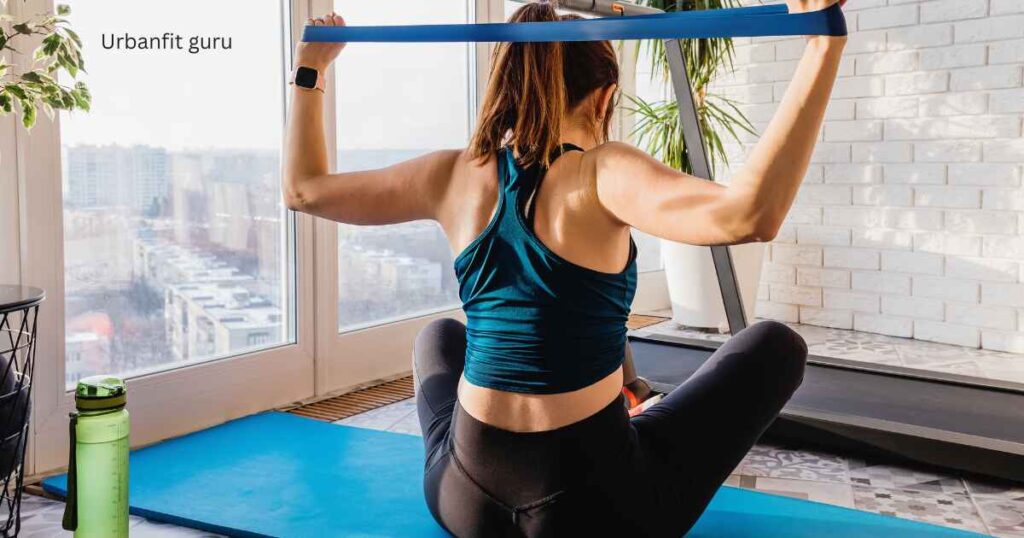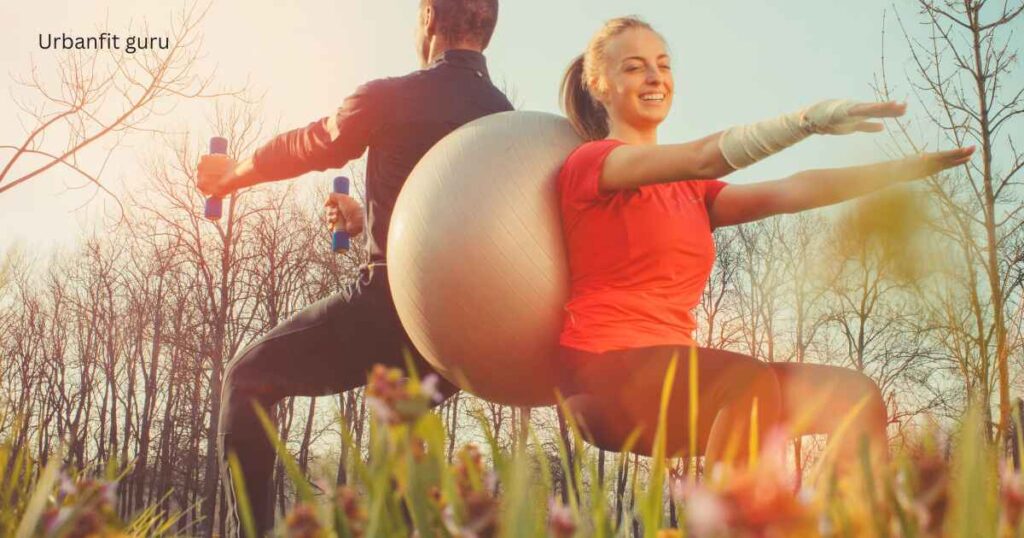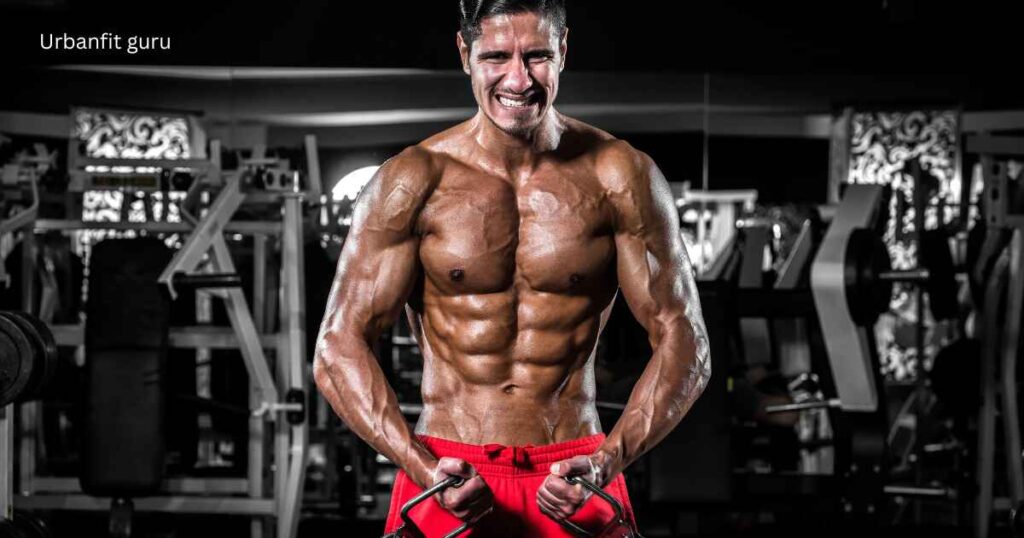Are push-ups or pullups better for the biceps?: Push-ups and pullups are essential exercises that work for multiple muscle groups and promote strength and stability.
They are widely used in professional gyms and home workouts because they deliver outstanding results. There has been debate for years about which exercise is better. Fitbeast aimed to reach a conclusion based on expert opinion and scientific evidence.
The study covered a variety of topics, such as muscle activation, adaptability to physical activity, injury risk, and overall fitness benefits.
Fitbeast, in collaboration with fitness experts worldwide, conducted tests and trials to reach an unbiased conclusion.
Analyses revealed that pullups are complementary to push-ups and not a competition. Push-ups are primarily aimed at the upper body, mainly the chest, shoulders and triceps.
Push-ups are a full-body exercise that also improves core stability and strength. Pullups primarily work the upper back and biceps and engage the shoulders and ab muscles.
Electromyography (EMG), a measure of muscle activation, was performed to determine the winner. The results revealed that pullups were more effective at stimulating the upper back muscles than push-ups.
This difference shows that both exercises are beneficial and can target different muscle groups depending on the fitness goal of an individual. [Are push-ups or pullups better for the biceps?]
9 powerful push-ups or pullups workout is better for biceps
- Superset Pullups and Bicep Curls
- Chin-Up Variations
- Negatives and Isometrics
- Bodyweight Exercises
- Resistance Band Workouts
- Isolated Bicep Work
- Compound Movements
- Spider Curls
- Cable Curls
1. Superset Pullups and Bicep Curls
I was not a big fan of forearm exercises in my younger years. I was swept up by the attraction of working my biceps until they were exhausted, achieving the fullness and peak I have sought since day one.
While I would add a few wrist curls to my routine every now and again, they were always an afterthought. After my first year competing, I saw the benefits of developing and training my forearms.
In my second year of competition, this paradigm shift in how I approached my training and goals led to a thicker and more complete physique.
It only takes one spark to ignite a massive change that will get you closer than ever before to achieving your goals. I hope you can find the spark on my website.
Supersetting my forearms after a set on biceps was the best way to ensure I fully committed to training them. This was like a sweetener before you take the medicine. After completing a set of grueling biceps curls I immediately performed a wrist curl set.
I did this because I wanted to dedicate half of my training time to the forearms. I also felt a pumping in my forearms and forearms after only one set. [Are push-ups or pullups better for the biceps?]

2. Chin-Up Variations
You only need a bar for a simple, challenging upper-body exercise. The concept of a pullup and chinup is simple: you simply hang from a bar and then lift your head over it, hence their names.
But they are also effective in building strength. You’re using only your body weight to resist, so you don’t need any additional weights (at least at first).
If you’re wondering how to tell the difference between chin-ups and pullups or why the buzz is so big, here’s a quick explanation: A pullup is performed with an overhand grip.
The most basic version of these exercises is to grip the bar with your shoulders shoulder-width apart and hang straight up with your arms and elbows locked. You can only use your arms, shoulders and back to pull yourself up so your head is above the bar.
Most people find it challenging to maintain a rigid form, especially at first. It’s not uncommon for people to cheat at pullups or chin-ups.
They will use momentum or lower the bar a few inches. These shortcuts are taken to the extreme with CrossFit kipping Pullup. This is usually done for speed. [Are push-ups or pullups better for the biceps?]
Read Also: How can I widen my biceps?
3. Negatives and Isometrics
You are a triathlete. You are used to pushing yourself–swimming faster, cycling further, running faster. You clock up yards, kilometers, and miles by the dozen. Do you know how much you can exercise your muscles without moving them?
You might not be familiar with isometrics, even if you believe in strength training. This can help prevent injuries and improve performance.
Constricting your glutes or hamstrings for 30 seconds in a static position doesn’t give you the same sense of accomplishment and badassery as doing a burpee or a weighted sit-up. Isometrics are awesome. Here’s everything you need to know about this movement.
There are many ways to perform isometric exercises. It is possible to get a great workout without any equipment.
Simply constrict a particular muscle group and hold it for the specified period or until you feel fatigued. Ex: Lay on your back, lift one leg six inches up with the toe pointing slightly out.
Constrict your quads as much as you can. You do it correctly if you start shaking like a tree within about 15 seconds.
Weight-free isometric exercises are also an option, but they’re not recommended for beginners. Since triathletes want to focus on quick and easy training options, we will concentrate on weightless isometric exercises. [Are push-ups or pullups better for the biceps?]

4. Bodyweight Exercises
Exercises that utilize your own body weight as resistance. They are usually designed to target multiple muscles and help you build strength and stability.
They can be done anywhere without the need for machines or weights. These exercises can be tailored to suit your specific needs. Whether you are a novice or an expert, you can benefit from these exercises.
This is probably the most popular bodyweight exercise. Since you are pushing your body weight up, your triceps and chest muscles will be used the most.
Your deltoids, the muscles of your shoulders, support the movement of your arms, while your abdominal muscles keep your core taut. Do not let your back or hips arch or dip. Smooth, controlled movements are best.
You can build your lower body strength and flexibility with these exercises. Your lower body will become more mobile.
You’ll use the large leg muscles, such as your quadriceps and hamstrings. Avoid putting too much weight on your balls or feet.
Your deltoids, the muscles of your shoulders, support the movement of your arms, while your abdominal muscles keep your core taut.
Do not let your back or hips arch or dip. Smooth, controlled movements are best. [Are push-ups or pullups better for the biceps?]
5. Resistance Band Workouts
When investing in home fitness equipment, Dumbbells are often the first choice. While I enjoy using dumbbells as a trainer, my favorite piece of equipment to use for strength training is a resistance band.
These are cheap, portable and versatile. They can also work both larger and smaller muscles. Elastic resistance training can improve balance and agility. It also can fatigue muscles more effectively than other forms of strength training.
Resistance bands are great for people who travel a lot. Like a hotel room, they can be easily packed and whipped out of a tight space. And they can even be stuffed in a home drawer.
Here are 15 resistance band exercises you can do to tone and strengthen your entire body. The resistance bands used in the first half are handles, and the looped resistance bands for the second.
Grab one handle from the resistance band with each hand. Let the handles hang, and grab the actual band if the band is too short.
Your palms should face the ground as you extend your arms straight in front of yourself. The resistance band should be tight enough to provide a challenge but not too much so that it is difficult to separate.
Pull the resistance band apart, ensuring your arms and hands parallel the floor. Reverse to your starting position. Repeat 10 times. [Are push-ups or pullups better for the biceps?]

6. Isolated Bicep Work
As you breathe in, lower the weights slowly while keeping your palms down. Continue until your upper arm and biceps have reached their fullest extent. Rotate your wrists at the bottom of the exercise so that your palms face up.
Exhale, and curl up the dumbbells until your biceps have fully contracted. To ensure a full contraction, Foster says you should bring your thumb higher than your small finger.
To complete the rep, squeeze the biceps in the top position for a moment. Then, rotate your wrists to the bottom.
Set the weight on each side to a comfortable level. Adjust the height of each pulley. Make sure that they are higher than your shoulders.
Grab each handle with an underhand hold (palms facing the ceiling). It would help if you had your arms fully extended, parallel to the ground and your feet at shoulder width apart. This is your starting position.
As you exhale, curl the weight as high as possible while you squeeze your biceps. Only your forearms need to move. As you inhale, contract your biceps to the highest point of the movement.
Then, slowly return back to the starting position. Foster says to “flex the biceps during your rest period to keep blood flowing into the working muscle.” [Are push-ups or pullups better for the biceps?]
7. Compound Movements
Stronger and Denser The Bones: Lifting heavy weights will benefit your muscles and bones. As strength and muscle increase, bones become more muscular.
Improves intermuscular coordination: Compound exercise teaches your muscles and joints how to train as a unit. They work together to control and produce force. This leads to a significant improvement in balance and movement efficiency.
Compound exercises burn more calories than isolation exercises. Compound exercises are better for fat loss, e.g., lowering Body Mass Index and improving Body Composition. The more muscle mass you have, the more calories you burn at rest.
Compound exercises improve Flexibility and Mobility. They are a type of dynamic Stretching. Compound exercises are designed to move you through an extensive range of motion. This increases flexibility by lengthening your muscles and improving joint mobility.
Ask a fitness professional or a physiotherapist at your gym if you’re unsure how to perform a compound movement. They can teach you the correct technique to avoid injury.
Consult your doctor before starting any new exercise program. Your doctor can suggest a safe exercise schedule based on your fitness level. [Are push-ups or pullups better for the biceps?]

8. Spider Curls
It is well known that performing exercises at different angles can help you change your training, prevent boredom and target different muscle parts.
The short head and long head are the two parts of the biceps that should be targeted. Here are some ways to target each part individually.
The barbell spider curl allows for a more excellent range of motion, from beginning to end, than the preacher curl.
This allows for a more excellent range of motion, leading to more efficient movement and injury prevention. It also increases the likelihood of strength and size gains.
Spider curls are superior to other bicep exercises because of the tension you can apply. This tension will be increased by applying an eccentric emphasis. Muscular tension will cause muscle stress. This stress will result in muscular adaptation, whatever your goal.
While there is a tendency to focus on the long head movements to develop the bicep peak, short head movements like the spider curl can add symmetry to the arm.
Suppose one head of the bicep is not equally trained compared to the second. In that case, there will be an imbalanced look from a performance and aesthetic perspective. [Are push-ups or pullups better for the biceps?]
9. Cable Curls
Landin D., Thompson M., Jackson M. The biceps at the shoulder: A review. J Clin Med Res. 2017;9(8):667-70. doi:10.14740/jocmr2901w
The brachialis is also used to flex the elbow. The stabilizing muscles are found in the upper back and shoulder, namely the anterior deltoid and trapezius. The wrist flexors can also be used.
Biceps are essential for daily activities. Biceps Cable Curls can increase biceps strength and size. 2 You can use them to pick up boxes, grocery bags, laundry baskets, or even cradle your child or pet.
CLASSIC CURL is one of the most common tools used by gym bros. It’s also one of the most common exercises used by gym bros.
You may be used to performing the biceps-curl with a dumbbell or barbell. You’re doing a great job but not getting the most out of your arms. It’s the tool that is at fault.
This is because using free weights for this exercise removes tension from the most essential part of the curl: the bottom section, where your biceps will be at their longest.
You’re wasting potential gains by not applying tension throughout the range. You may need to add the cable biceps curl to your biceps workout plan. [Are push-ups or pullups better for the biceps?]

Conclusion:
Pullups tend to be more effective for developing biceps than push-ups. Pullups are more effective at building strength and size in the biceps because they directly engage them, especially with neutral or underhand grips.
Push-ups work the biceps but are primarily aimed at the chest and triceps. Pullups are the best way to maximize bicep development. [Are push-ups or pullups better for the biceps?]
